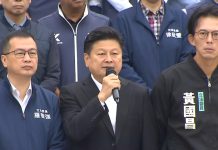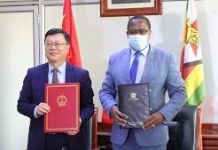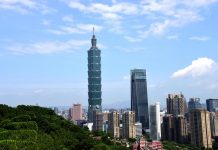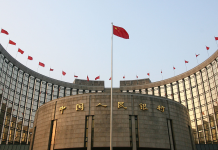
When the world’s largest free trade bloc was created through the signing of the Regional Comprehensive Economic Partnership (RCEP) agreement by 15 Asia-Pacific economies in November 2020, the huge opportunities it represents inspired countless business people in the member states who were seeking greater success. Following the pact’s entry into force in January, their dreams are coming true and new possibilities in bilateral and multilateral economic and trade cooperation are emerging.
The burgeoning regional trade has also given platforms such as the China International Fair for Investment and Trade (CIFIT) a bigger role.
With more than 30 years of history, the CIFIT in Xiamen, Fujian Province, has become a particular boon for global investors eyeing the Chinese market and an integral part of China’s investment landscape. More than 300,000 business people from over 200 countries and regions signed over 30,000 project contracts in the editions before 2022. The fair is also a source of authoritative information, and a venue for sharing research outcomes on global investment trends.
This year, the 22nd CIFIT will take place from September 8 to 11.
The event will focus on boosting trade among the RCEP members, Guo Tingting, Assistant Minister of Commerce of China, said at a press conference in Beijing on August 30. Its other priorities will include implementing the China-proposed Global Development Initiative, promoting coordinated development of the regional economy, expanding multilateral and bilateral economic and trade exchanges, as well as pushing forward cooperation under the China-proposed Belt and Road Initiative and the sustainable development of the BRICS countries.
RCEP opportunities
The RCEP comprises the 10 member states of the Association of Southeast Asian Nations—Brunei, Cambodia, Indonesia, Laos, Malaysia, Myanmar, the Philippines, Singapore, Thailand and Viet Nam, and five of their trading partners, namely China, Japan, the Republic of Korea (ROK), Australia and New Zealand. It accounts for roughly 30 percent of the world population, 30 percent of global GDP and 28 percent of international trade. The agreement is currently effective for 12 of its 15 signatories.
The pact will eliminate as much as 90 percent of the tariffs on goods traded among its signatories over the next 20 years. As for investment, the RCEP adopts a negative list-based management approach, which means all sectors and services will be liberalized except for those explicitly stated in the agreement.
According to an Asian Development Bank study, the RCEP will increase the member economies’ incomes by 0.6 percent by 2030, adding $245 billion annually to regional income and 2.8 million jobs to regional employment. China’s customs data shows that the trade volume between China and other RCEP member countries increased 7.5 percent year on year in the first seven months of 2022.
“Under the RCEP framework, regional economic and trade cooperation and two-way investment face momentous opportunities,” Lu Yue, a professor at the Academy of China Open Economy Studies at the University of International Business and Economics, told Beijing Review. “The RCEP consists of market access commitments on goods, services, investment and other areas. It is a comprehensive, modern, high-quality and mutually beneficial free trade agreement.”
In recognition of the RCEP’s potential to shape trade and investment patterns in the Asia-Pacific region, the CIFIT organizing committee has designed several themed activities this year. The 21st World Business Leaders Roundtable will discuss the RCEP-related opportunities and challenges facing international trade and investment. There will also be a forum on the RCEP and international cooperation.
In addition, the committee will organize a matchmaking event for participants from the RCEP states, assisting them to identify potential investment opportunities.
“Discussions among government officials, representatives of international organizations, experts and business leaders on economic development issues and the capital flow in China and around the world are of great importance to investors, especially against the current backdrop of industrial and supply chains being struck hard by the pandemic,” Liu Dianxun, Director of the Investment Promotion Bureau of the Chinese Ministry of Commerce (MOFCOM), said at the press conference.
The ROK will attend this year’s CIFIT as the guest country of honor, with a pavilion covering more than 420 square meters. The Korea Trade-Investment Promotion Agency will hold investment environment briefings and one-on-one business negotiations. Representatives of some ROK provinces and cities, as well as institutions, will also participate.
“The CIFIT is a crucial platform for the ROK to present itself to enterprises from China and other countries,” Han Jae Heuk, Consul General of the ROK in Guangzhou, said at a promotional meeting hosted by the CIFIT organizing committee in Guangzhou, Guangdong Province, on July 20.

Two-way investment
“Currently, multinationals enjoy a huge market and a more optimized business environment in China,” Lu said.
China, with a population of 1.4 billion and more than 400 million middle-income earners, has continued to unleash its market potential as the world’s second largest consumption market, she said, adding that the government has been improving regulations to better protect the legitimate rights and interests of foreign investors. Earlier this year, China updated its negative list for market access, opening more sectors of its economy to private investment, which applies to foreign and domestic investors alike.
According to MOFCOM data, paid-in foreign direct investment in the Chinese mainland expanded 17.3 percent year on year to 798.33 billion yuan ($115.8 billion) in the first seven months of the year. “It indicates foreign investment is sustaining rapid growth in China and the market is very attractive to foreign investors,” Lu said.
Chinese companies are also investing overseas at an increasing pace. China’s non-financial outbound direct investment reached 424.28 billion yuan ($61.6 billion) in the first seven months of the year, up 4.4 percent year on year, according to MOFCOM.
Lu pointed out as the industrial and digital revolutions accelerated during the COVID-19 pandemic, medical care and life sciences have emerged as the major areas of China’s new outbound investment, which will become more technology-oriented and diversified and prioritize interdisciplinary cooperation. Moreover, Chinese investors will increase their participation in projects in the fields of green infrastructure, green energy and green finance, as responding to climate change has been an international consensus.
The trend of regional cooperation and investment under the Belt and Road Initiative and the RCEP will continue to increase, Lu concluded.






